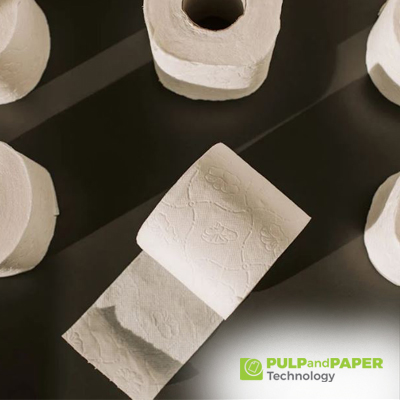Hygiene Essentials: Innovations in Paper-Based Hygiene Products

Introduction to Paper-Based Hygiene Products
Hygiene is a fundamental aspect of human health and well-being, and innovations in paper-based hygiene products have significantly contributed to enhancing personal and public health standards. These products, ranging from tissue papers to disposable wipes and sanitary napkins, play a vital role in maintaining cleanliness, comfort, and convenience in various settings, including homes, workplaces, healthcare facilities, and public spaces. The continuous evolution of paper-based hygiene products reflects advancements in materials science, manufacturing processes, sustainability practices, and user-centric design, making them essential components of modern lifestyles.
Evolution of Paper-Based Hygiene Products
The history of paper-based hygiene products dates back centuries, with the invention of paper itself marking a significant milestone. Early civilizations used crude forms of paper for hygiene purposes, such as cleaning and drying. However, it was during the Industrial Revolution that mass production techniques revolutionized the hygiene product industry. The introduction of mechanized papermaking processes enabled the production of softer, more absorbent papers suitable for hygiene applications. Over time, innovations in pulp processing, fiber blending, and product design led to the development of specialized hygiene papers tailored to specific needs, such as facial tissues, toilet papers, and medical wipes.
Benefits of Paper-Based Hygiene Products
Paper-based hygiene products offer numerous advantages that contribute to their widespread adoption and use. Their softness, absorbency, and disposability make them hygienic and convenient for personal care routines. Unlike reusable cloth-based alternatives, paper-based products reduce the risk of bacterial growth and cross-contamination, promoting better hygiene practices. Additionally, their lightweight nature and compact packaging make them portable and ideal for on-the-go use, enhancing user comfort and convenience in various situations.
Key Innovations in Paper-Based Hygiene Products
Advanced Absorbent Technologies: Innovations in pulp processing and fiber engineering have led to the development of highly absorbent papers for applications like diapers, feminine hygiene products, and medical pads. Advanced absorbent polymers integrated into these products enhance moisture retention and leakage protection, ensuring user comfort and confidence.
Softness Enhancement: Manufacturers continuously strive to improve the softness of paper-based hygiene products to mimic the feel of natural fabrics. Surface treatments, such as embossing and lotion coatings, contribute to a softer and more tactile user experience, especially in products like facial tissues and toilet papers.
Sustainability Initiatives: With growing environmental awareness, the hygiene product industry has focused on sustainable practices. This includes using recycled fibers, adopting eco-friendly manufacturing processes, and promoting biodegradable and compostable product options. These efforts align with global sustainability goals and address consumer preferences for environmentally responsible choices.
Antimicrobial and Odor-Control Features: Some paper-based hygiene products incorporate antimicrobial agents or odor-neutralizing compounds to enhance hygiene performance. These features are particularly beneficial in healthcare settings, where infection control and odor management are critical priorities.
Smart Packaging Solutions: Innovations in packaging technologies, such as resealable closures, single-dose packaging, and compact dispensers, improve product freshness, portability, and ease of use. Smart packaging also enhances product visibility, information accessibility, and brand differentiation in competitive markets.
Challenges and Limitations
Despite the significant advancements in paper-based hygiene products, certain challenges and limitations persist. These include:
Firstly, despite strides in sustainability, the widespread use of disposable paper products contributes significantly to deforestation, water consumption, and waste generation, posing a challenge in balancing hygiene needs with environmental conservation. Secondly, enhancing product performance, such as increasing absorbency or softness, often comes with higher production costs, necessitating a delicate balance between quality optimization and competitive pricing. Thirdly, the stringent regulatory standards and quality assurance protocols, particularly for hygiene products used in healthcare settings, add complexity to product development and manufacturing processes, highlighting the importance of regulatory compliance. Lastly, evolving consumer preferences, such as a growing demand for organic or hypoallergenic products, necessitate continuous innovation and customization to meet the diverse needs of the market, presenting an ongoing challenge for manufacturers and industry stakeholders.
Future Trends in Paper-Based Hygiene Products
The future of paper-based hygiene products is poised for further innovation and transformation, driven by technological advancements, sustainability imperatives, and changing consumer behaviors.
Key trends shaping the industry's trajectory include:
Continued research into advanced materials like bio-based fibers, nanomaterials, and functional coatings will enhance product performance, sustainability, and versatility. Integrating Internet of Things (IoT) technologies will enable smart paper-based products that track usage patterns, manage inventory, and offer personalized user experiences in real-time. Embracing circular economy practices, such as closed-loop recycling and product stewardship, will minimize waste and maximize resource efficiency throughout the product lifecycle. Customization and personalization of hygiene products to individual preferences, skin sensitivities, and usage scenarios will drive product differentiation and consumer satisfaction. Additionally, collaborative efforts in hygiene education and awareness among industry stakeholders, healthcare professionals, and public health agencies will promote behavior change interventions and community health initiatives, fostering a more informed and hygienic society.
Conclusion:
Paper-based hygiene products have come a long way from their humble origins to become indispensable components of modern hygiene practices. Innovations in materials, manufacturing processes, sustainability practices, and user experience have continually elevated the standards of hygiene products, offering consumers comfort, convenience, and peace of mind. As the industry embraces technological advancements and sustainability imperatives, the future of paper-based hygiene products holds promise for enhanced performance, eco-friendly solutions, and personalized experiences, contributing to healthier and more sustainable lifestyles globally.








